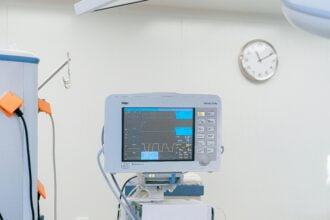As the founder of the 10,000+-member Digital Health group on LinkedIn, I can’t help but see that there’s a perfect storm brewing in healthcare, and it’s one with surprisingly little turbulence. As we see more employees in healthcare (whether it’s pharma, a hospital, or device and diagnostics sales) demanding to use their personal devices on the job, we’re also seeing technology and drug developers embracing the use of mobile devices in the field.
As the founder of the 10,000+-member Digital Health group on LinkedIn, I can’t help but see that there’s a perfect storm brewing in healthcare, and it’s one with surprisingly little turbulence. As we see more employees in healthcare (whether it’s pharma, a hospital, or device and diagnostics sales) demanding to use their personal devices on the job, we’re also seeing technology and drug developers embracing the use of mobile devices in the field. Now, the big data that traditionally was accessed only from headquarters is being downloaded, wirelessly transmitted, and read by employees across the healthcare spectrum through social networks and the Internet from the clinic, laboratory, office and road.
This is the digital revolution in healthcare: not only are Microsoft® products ceasing to become the predominant platform for healthcare employees, providers and consumers, the decisions to adopt certain technologies are being made by employees, providers, and customers (and less often by the corporate IT department). For example:
- Pharmaceutical companies are buying more Apple® iPad® tablets for their sales representatives and executives to use to communicate, download data, and otherwise manage their accounts remotely. The number of life sciences companies planning to buy Apple hardware jumped 220% since 2009.
- While eight percent of hospitals fully enable access for user-owned (BYOD) devices right now, 58 percent plan to give iPad users remote access to hospital applications, and 85 percent provide some degree of access (Internet-only, limited applications, etc.). Those are big first steps for a highly security-conscious business.
- Pfizer has launched the world’s first virtual clinical trial, using mobile phones and web-based technology so the trial’s 600 participants can enter data and manage their activity without reporting in person to a clinical site. The trial, testing a drug to treat overactive bladder, allows patients to use mobile devices to keep an electronic diary and report results directly. Researchers can monitor activity and report results to participants, all across the Internet.
This is a major shift from paper-based systems used just a decade ago, through pushing browser-based apps to mobile devices (with predictably disappointing results from customers), to integrating customer-, employee- and provider-based experiences into new technology design and strategy. This shift has resulted in greater penetration into specific markets, higher employee engagement, and ultimately, could provide a better, more customer-driven healthcare system.
Could this convergence of technology and consumer use be a perfect storm, with blue skies in the forecast? Can traditional healthcare IT embrace this new world of customer-driven, BYOD technology? What’s the best way to manage security and privacy issues? Is there a strong hesitancy to embrace a disruptive innovation? Tell us what you’re thinking and how your life science company is tracking rapid changes in the digital health space.
This article was originally published on the Popper and Co blog.





